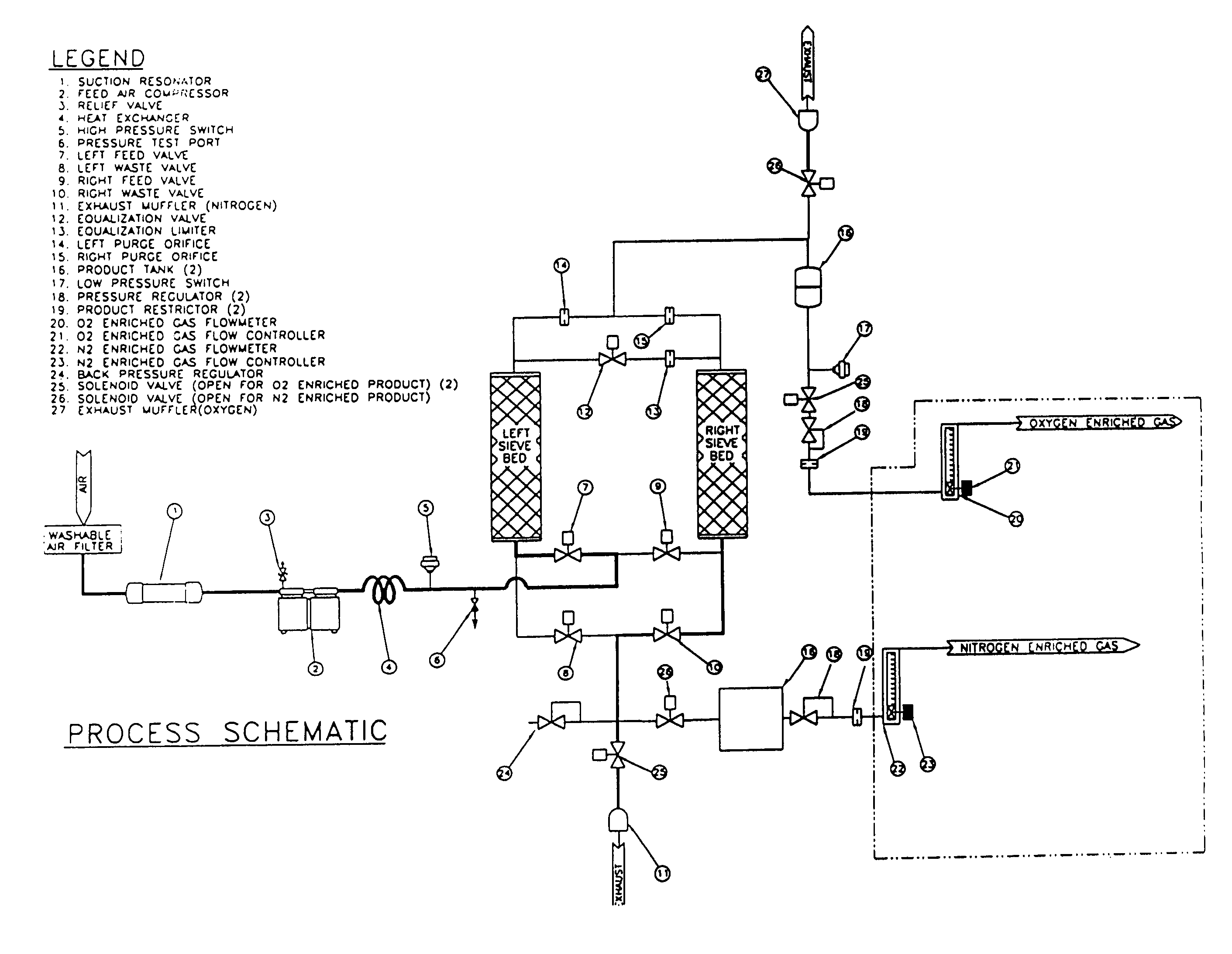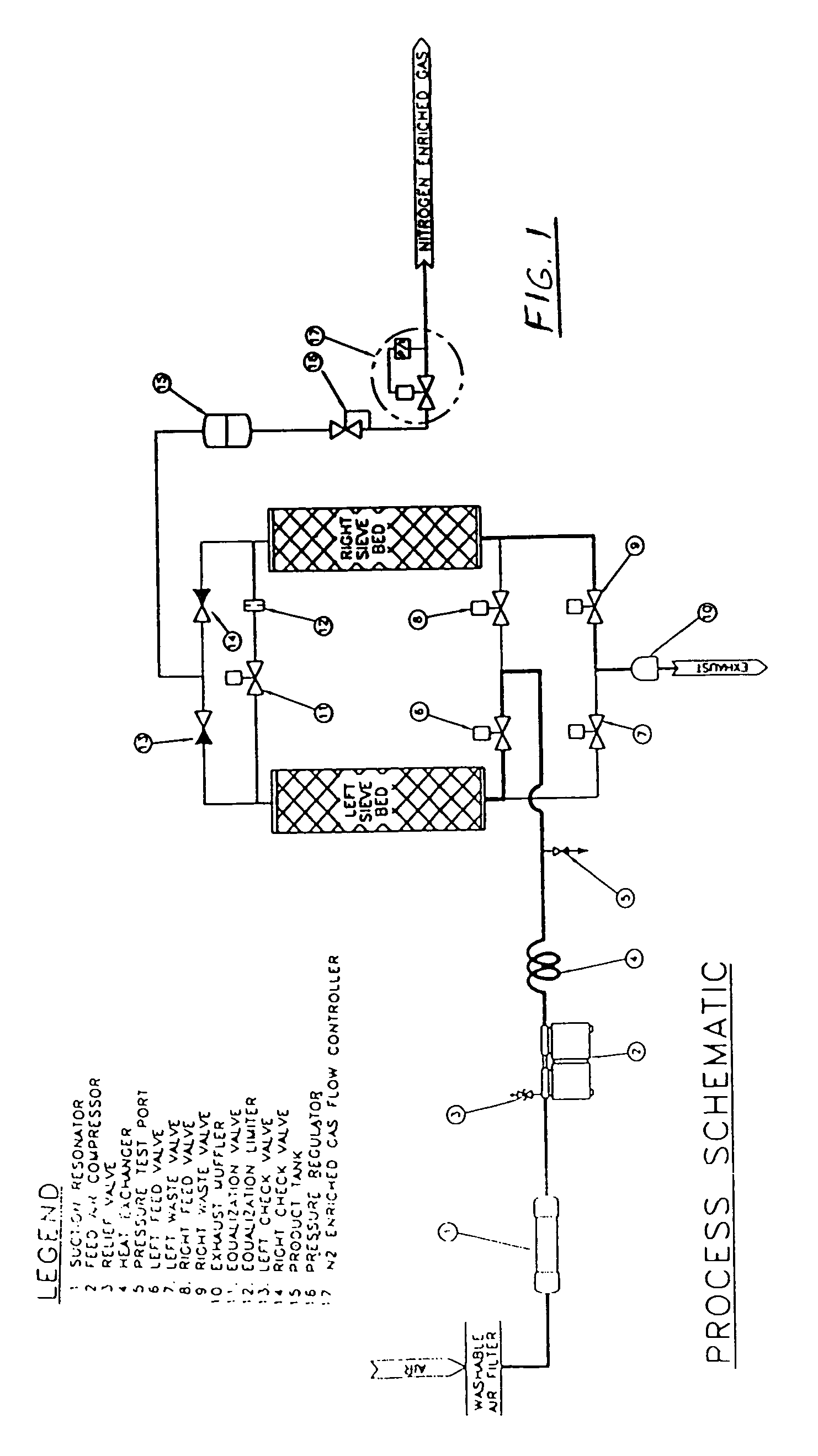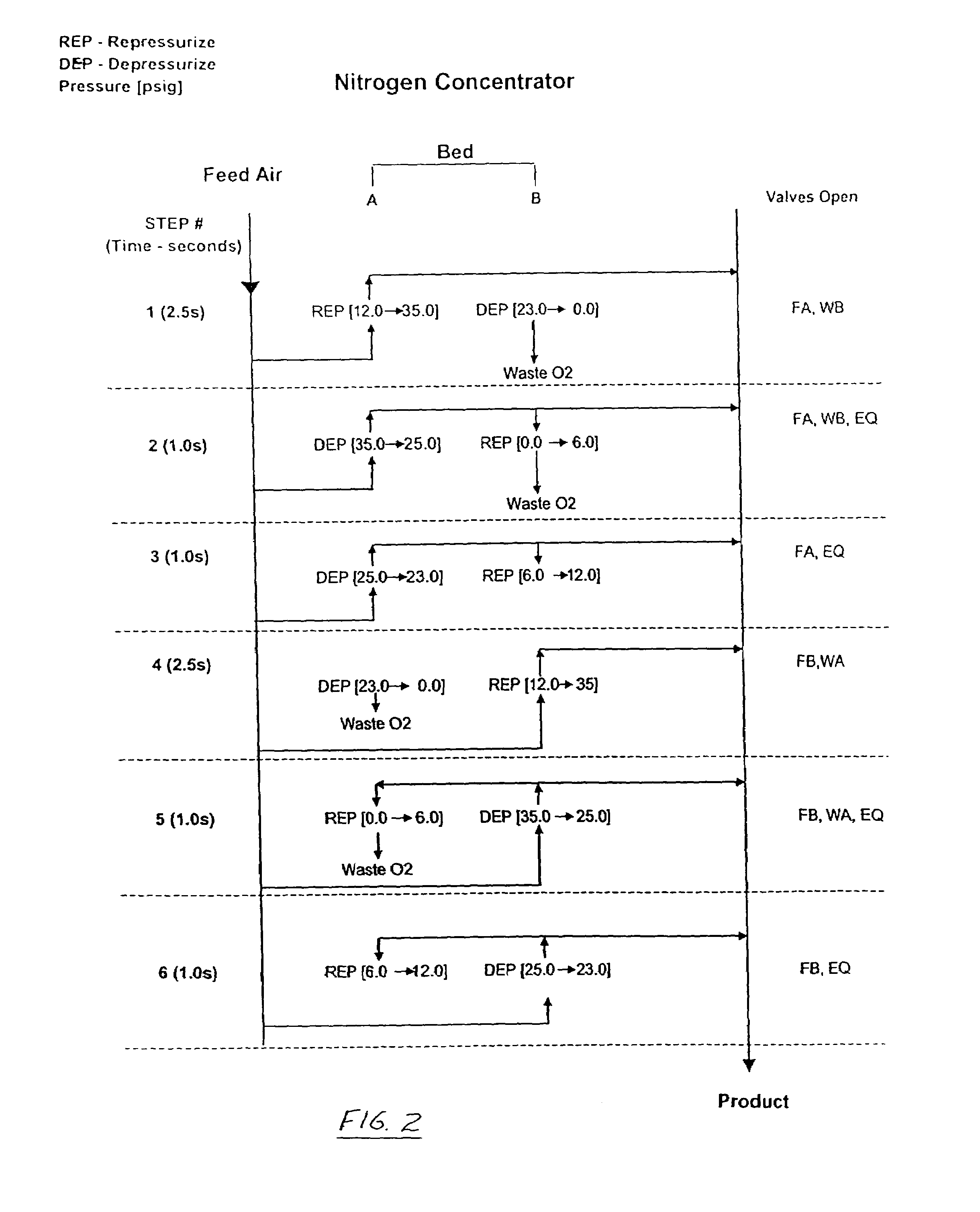Portable hypoxic apparatus
a portable, hypoxic technology, applied in the field of portable hypoxic equipment, can solve the problems of inability to achieve hypoxic environment training in most cases, inability to move freely, so as to increase or decrease the effective flow rate of hypoxic gas, increase or decrease the activation time, and increase the efficiency of breathing gas delivery
- Summary
- Abstract
- Description
- Claims
- Application Information
AI Technical Summary
Benefits of technology
Problems solved by technology
Method used
Image
Examples
Embodiment Construction
[0029]Turning now to FIG. 1 of the drawing and in accordance with the present invention, there is shown a preferred embodiment, generally indicated as A, of a combined pressure swing adsorption apparatus and gas flow device, or PSA / GFC, used for fractionating at least one component, in this case oxygen, from ambient air, by pressure swing adsorption to produce a product gas with reduced oxygen concentration, and for delivering the product gas at specific and variable intervals upon demand by a user. The general operating principles of pressure swing adsorption are well known and are disclosed, for example, in commonly assigned U.S. Pat. Nos. 4,802,899, 5,531,807 and 5,871,564, the entire disclosures of which are incorporated by reference herein. Although these patents describe apparatus to produce product gases with higher oxygen concentrations, the principles of operation are similar, except that an oxygen adsorbent sieve material such as a known carbon molecular sieve material or ...
PUM
 Login to View More
Login to View More Abstract
Description
Claims
Application Information
 Login to View More
Login to View More - R&D
- Intellectual Property
- Life Sciences
- Materials
- Tech Scout
- Unparalleled Data Quality
- Higher Quality Content
- 60% Fewer Hallucinations
Browse by: Latest US Patents, China's latest patents, Technical Efficacy Thesaurus, Application Domain, Technology Topic, Popular Technical Reports.
© 2025 PatSnap. All rights reserved.Legal|Privacy policy|Modern Slavery Act Transparency Statement|Sitemap|About US| Contact US: help@patsnap.com



